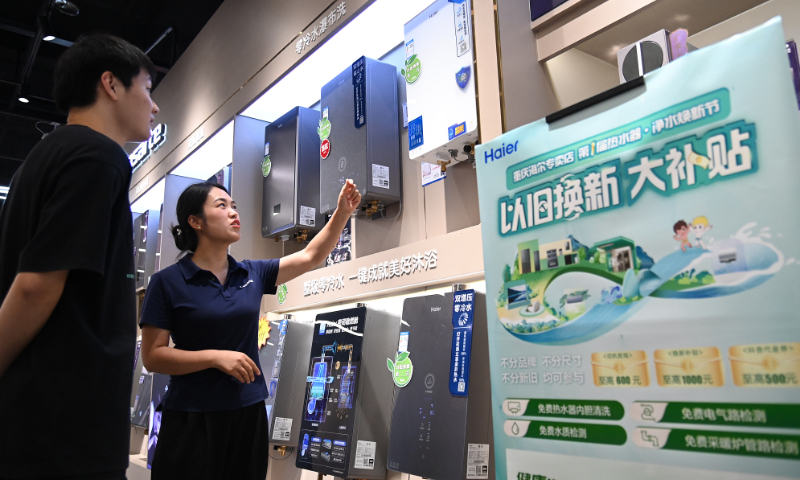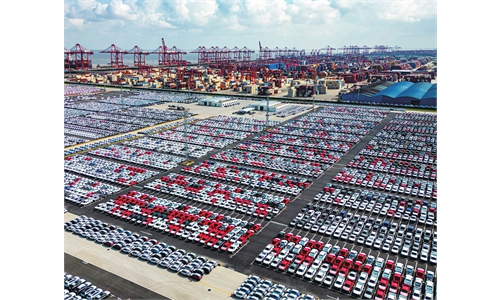China adopts measures to boost home appliance trade-ins, expand domestic demand
Foundation for achieving annual economic development goals remains solid: experts

A staff member introduces consumers to a trade-in program for smart home appliances at a home appliance store in Chongqing Municipality's Shapingba district on July 11, 2024. Photo: VCG
China has stepped up incentives to encourage consumers to replace their old home appliances with new ones, offering subsidies of up to 2,000 yuan ($280.28) for each item in a bid to better expand domestic demand and further stimulate the internal growth momentum of the world's second-largest economy.
According to a circular released by the Ministry of Commerce and three other government departments recently, those who buy eight categories of home appliances with high energy efficiency, including refrigerators, washing machines, televisions, air conditioners and computers, can enjoy trade-in subsidies.
The subsidies will be 15 percent of the final sale prices. Each individual can get subsidies for one item in one category and the subsidies for each item cannot exceed 2,000 yuan, the circular stated.
"Increasing the subsidy will directly spark consumers' willingness to replace their old home appliances. The last sales peak of home appliances in China came about 10 years ago. Given the longevity of home appliances in general and consumers' demand for smart, better-designed and energy-efficient equipment, now is a good time for the authorities to encourage home appliance trade-ins," Zhang Yi, CEO of iiMedia Research Institute, told the Global Times on Monday.
The State Council, the cabinet, released an action plan in March to promote the large-scale renewal of equipment and trade-ins of consumer goods, as part of the measures to unleash domestic demand potential and sustain the economic recovery.
Such programs will bring more high-quality consumer goods, stimulate domestic consumption and reinforce the economic recovery. For manufacturers and relevant services providers, this measure also presents an important opportunity for growth, Zhang said.
For example, Chinese e-commerce platform JD.com has joined hands with multiple provinces and cities to offer discounts for consumers who buy air conditioners on the platform, which benefited a large number of households.
Retail sales rose 2.7 percent year-on-year to nearly 3.78 trillion yuan in July, 0.7 percentage points higher than the growth rate in June, according to the National Bureau of Statistics.
The National Development and Reform Commission announced in July that about 300 billion yuan in ultra-long special treasury bonds will be earmarked to boost large-scale equipment renewals and replacement of old consumer goods with new ones.
Considering the accelerated use of ultra-long-term special government bonds while trade-in policies and real estate policies continue to produce effects, China's domestic demand momentum further strengthened in the second half of the year, building a solid foundation to achieve the nation's annual economic development goals, Zhou Maohua, an economist at China Everbright Bank, told the Global Times.
Overall, the supply side recovered faster than the demand side in the first half, while in the second half, more efforts should be put into the effective implementation of support policies that were rolled out in the second quarter, Zhou said.



